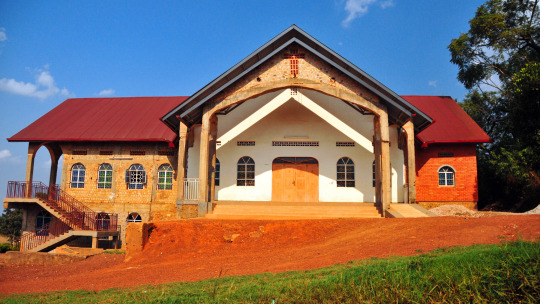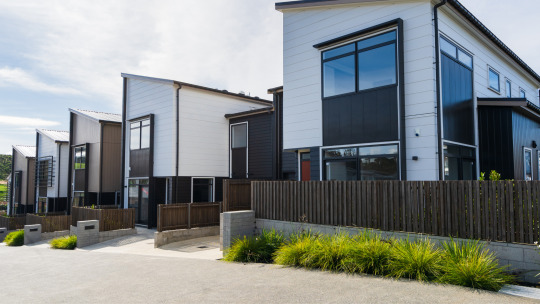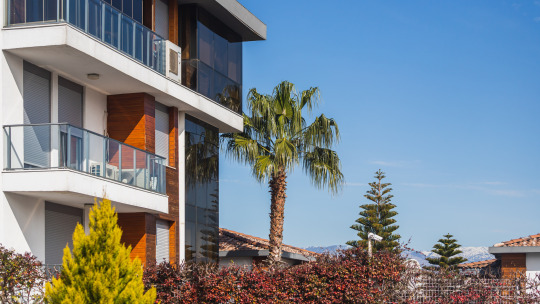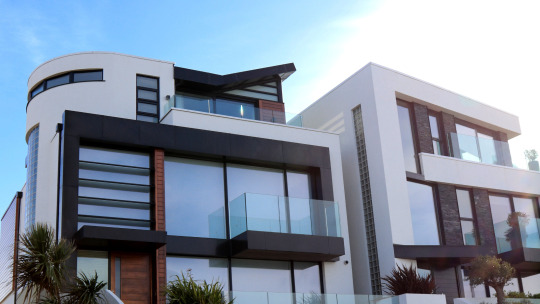Don't wanna be here? Send us removal request.
Text
Embracing Urban Greenery: Creating Lush Gardens in City Homes

Urban areas may seem like concrete jungles, but opportunities abound for inviting nature's beauty into city living spaces. From petite container gardens to sprawling rooftop oases, creative green spaces nurture wellbeing and connection right at home.
Miniature Gardens
Small-space dwellers can still enjoy gardening's pleasures by cultivating miniature gardens. A bright windowsill or fire escape can host a micro ecosystem of tiny plants like succulents, herbs, and petite annuals. Their scale suits urban constraints while their lively colors and textures spark joy.
For indoor micro gardening, mini tabletop greenhouses provide self-contained worlds. Outdoor mini gardens in hypertufa troughs or repurposed containers add living touches to patios and balconies. A mosaic of miniature gardens multiplies the delight.
Vertical Gardens
Maximize vertical real estate by gardening up. Green walls with integrated irrigation systems or modular panels support plants climbing skyward. Customize designs to suit architecture and light exposure.
Freestanding vertical gardens are also an option, assembled from stacked wooden crates, hanging pockets, or poles that can stand alone or mount to walls. Choose a mix of trailing vines, flowering climbers, and cascading greenery to animate vertical space .
Community Gardens
Connect with fellow urban gardeners by joining or founding community gardens. Neighbors share plots in vacant lots and public spaces, cultivating fruits and vegetables while building relationships.
If space is scarce at home, allotment gardens allow urbanites the space to flex their green thumbs while getting to know the community. Surrounding gardens foster friendships.
Rooftop Gardens
Escape the bustling streets by creating a rooftop refuge. Purpose-built container planters secure soil and plants on flat roofs to craft lush getaways. Water features, cozy seating, and decorative accents transform rooftops into outdoor living rooms.
Green roofs with drought-tolerant sedum groundcover offer environmental benefits too, absorbing rainwater, cooling buildings, and filtering air pollution.
Edible Gardens
Fashion chic urban orchards and cutting gardens to enjoy nature's bounty. Dwarf fruit trees thrive in containers while vertical systems maximize planting area. Decorative raised beds provide ample space for snipping fresh herbs and veggies.
Getting hands dirty while nurturing life fuels the soul. Harvesting homegrown produce delivers unmatched flavor and satisfaction.
Cultivating urban gardens, whether miniature in scale or sprawling across rooftops, allows city dwellers to intertwine living landscapes into urbanity. Verdant plants nourish, renew, inspire and connect wherever they take root.
0 notes
Text
The Evolution of Urban Architecture: From Past to Present

Urban architecture refers to the design and organization of buildings, public spaces, transportation systems, and other physical elements that make up cities. Urban design has evolved dramatically through history as societies, technologies, and priorities have changed. Tracing this evolution provides perspective on how cities came to be shaped as they are today.
Ancient Cities
In ancient civilizations like Rome, Greece, and Egypt, cities were designed to convey grandeur, order, and imperial power. Monumental architecture, broad avenues, and open plazas provided settings for rituals, governance, and trade. Cities often developed around central citadels or religious sites. Design focused on expressing political authority and cultural identity.
Strict grids and geometric street patterns also emerged in ancient cities to aid military defense and transportation. The ancient Greek Hippodamian grid plan organized cities into orderly blocks. Axial plans aligned key buildings along a central axis for visual impact.
Medieval Cities
With the decline of the Roman Empire, medieval European cities became more organically shaped by geography and evolving local needs. Narrow, winding streets predominated. Defensive walls with limited access points protected against outside threats. Design priorities were functionality, commerce, and defense rather than grand architectural statements.
Cathedrals and castles anchored medieval cities. Commercial activity centered on open-air market squares. Housing was tightly clustered, with buildings spanning over alleys to maximize space. The medieval city was dense, mazelike, and inwardly focused.
Renaissance Ideals
Renaissance cities like Florence and Paris revived interest in monumentalism and classical order. Boulevards and plazas returned to prominence. Streets radiated symmetrically from central hubs. Civic and religious structures again took center stage in urban design.
The Renaissance also saw early forms of zoning and urban planning emerge. Newly wealthy merchants commissioned grand palaces, transforming cities into showcases for art and architecture. Ornate embellishments and geometric proportions defined the urban fabric.
Industrialization
Industrialization sparked rapid, unstructured urbanization in the 18th and 19th centuries. Overcrowding, pollution, disease, and other social problems resulted as populations soared. In response, urban planning concepts like zoning, sanitation improvements, and transportation infrastructure developed to address these impacts.
Visionary planners and architects sought new models beyond cramped industrial cities. Ebenezer Howard's Garden City concept imagined self-contained greenbelt towns. Baron Haussmann's 19th century redesign of Paris set standards for sunlight, sanitation, and open space.
Modernism
Modernist urban design in the early 20th century broke dramatically from old patterns. Developments like Le Corbusier's Radiant City model rejected ornamentation and historical reference. Towers and grids brought ample light and space to city centers.
The rise of the automobile influenced modernist plans emphasizing flow, mobility, and separation of uses through zoning and highways. Urban renewal programs demolished older areas deemed slums. Later critics argued modernism disregarded community and context.
Post-Modernism
Post-modern urban design from the 1970s onward reintroduced vernacular styles, diversity, and neighborhood character as priorities. New Urbanism promoted walkable, mixed-use developments. Contemporary cities now balance modern demands with preservation, sustainability, and human-centric design.
Urban architecture continues evolving. Public participation, adaptive reuse, green building, and smart cities represent new directions. Looking forward requires understanding the past. Urban design's rich history provides perspective on how cities came to be and where they are headed next.
0 notes
Text
Transforming Urban Spaces: DIY Projects for Stylish Apartments

Urban apartment living comes with space constraints, but that shouldn't limit your ability to infuse personality and style. With clever DIY projects and budget-savvy decor solutions, transforming compact city dwellings into stylish sanctuaries is possible. Here are innovative ideas to make your urban apartment feel like a true home.
Define Your Style
Start by identifying your personal decor style - modern, bohemian, mid-century modern, etc. This provides direction for all design choices to follow, creating a cohesive look. Collect inspiration images and examples that speak to you. Shop second-hand stores and online marketplaces to find affordable pieces reflecting your aesthetic.
Upcycle Furnishings
Give tired furnishings new life through upcycling. Sand and repaint old furniture in on-trend colors. Convert a dresser into a quirky console by replacing the hardware and topping it with glass. Add removable wallpaper or contact paper to shelving units and side tables for pattern and interest.
Embrace Multipurpose Pieces
Make the most of small square footage by selecting furniture that multitasks. Ottomans with hidden storage, coffee tables with lift-tops, and beds with drawers maximize functionality. Floating wall shelves and vertical racks provide display space while occupying zero floorspace.
Incorporate Greenery
Plants bring life and freshness to urban interiors. Opt for low-maintenance varieties like succulents, snake plants, and pothos that thrive without much light. Hanging plants, mounted wall planters, and compact herb gardens allow integrating greenery in inventive ways.
Display Art Creatively
Make blank walls and awkward nooks more interesting with art. Frame favorite prints or pages from books and magazines. Paint directly on walls for a bold, artistic focal point. Lean large canvases against walls rather than hanging for a casual vibe.
Add Pops of Color
Inject color through decorative accents like throw pillows, area rugs, and bold wall hangings rather than large furniture or art. These smaller hits of vibrant color are easily changeable as your style evolves.
Install Specialty Lighting
Thoughtful lighting transforms studios and small spaces. Sconces, pendants, and under-cabinet fixtures provide task lighting. Strip LEDs and picture lights create dramatic focal points. Smart bulbs enable adjusting ambiance.
Personalize with DIY Touches
Infuse personality by making custom pieces yourself. Create graphic wall art using paint swatches. Fashion headboards or bedframes using reclaimed wood. Display favorite photos gallery-style rather than in frames.
With inventive DIY projects and decor solutions, small urban apartments can feel fresh, stylish, and uniquely you. Tap into your creativity to transform compact city spaces into inspiring retreats.
0 notes
Text
Exploring Hidden Gems: Urban Dwellers' Guide to Local Cafes and Boutiques

Big city living offers endless possibilities for exploration. Venturing beyond the well-beaten tourist traps reveals a wealth of charming independent cafes, boutiques, and cultural hubs waiting to be discovered. Here is an insider's guide to uncovering the hidden gems in your own urban backyard.
Talk to the Locals
The best recommendations often come from those in-the-know. Strike up conversations with neighbors, baristas, shop owners and fellow city wanderers to get personalized ideas on beloved but lowkey spots. These hyperlocal tips lead you straight to the hidden haunts.
Take Different Routes
Alter your daily commute, mix up your jogging route, or meander new streets on a long walk. Straying from routines exposes you to side alleys and neighborhoods rarely seen, increasing chances of stumbling upon hole-in-the-wall delights. Let curiosity guide your detours.
Explore Up-and-Coming Areas
Scan local blogs and alternative papers for buzz around emerging districts on the verge of being discovered. These transitioning neighborhoods brim with creative energy, housing small storefronts and eateries before word gets out and rents rise. Visit early to soak in authentic charm.
Talk to Shop Owners
Strike up conversations with the passionate entrepreneurs and artists running indie shops and cafes. They often have the inside scoop on other beloved local businesses and lesser-known cultural events. Ask for their personal recommendations.
Study Local Interest Magazines/Sites
Publications and websites catering to city savvy locals are goldmines for finding genuine local gems before they gain wider fame. They reveal a more authentic view of an area versus mainstream tourist coverage.
Join Digital Communities
Facebook groups, Subreddits, Meetups and message boards connecting urbanites open access to crowdsourced intel on cherished community hubs. Search using your city name plus “hidden gems”. Ask to join and browse archived conversations.
With some targeted research, creative wandering, and chatting up the locals, uncovering your city’s hidden haunts is highly rewarding. Supporting beloved but lowkey cafes and boutiques feeds your curiosity while strengthening the local culture. Soon you’ll be in-the-know enough to recommend these community gems yourself.
0 notes
Text
Designing a Cozy Urban Retreat: Tips for Small Space Living

Creating a welcoming sanctuary at home is crucial for wellbeing when living in an urban area. The good news is that even the smallest city spaces can be transformed into peaceful retreats with the right design strategies. Here are expert tips for fashioning an urban oasis:
Embrace Multifunctional Furniture
Furniture that adapts to serve different needs is essential in tight quarters. Murphy beds, convertible coffee tables, nesting tables, and storage ottomans maximize flexibility. Custom built-in storage and seating also streamlines space.
Choose Lightweight, Neutral Furniture
Stick to furniture with slim, leggy profiles to maintain an airy aesthetic in compact rooms. Upholstered pieces should have light neutral fabrics like linen that breathe well in smaller spaces.
Incorporate Natural Elements
Connecting to nature fosters tranquility. Add living plants, woven accents, natural fiber rugs, and reclaimed wood finishes. An urban garden on a balcony or windowsill also introduces nature.
Install Creative Storage
Make the most of every inch with customized storage solutions. Use wall space for floating shelves, mount bike racks or pegboards for tools. Under-bed drawers offer out-of-sight storage.
Multi-task Lighting
Layer lighting to set various moods and serve different functions. Ambient fixtures provide overall illumination while task lighting aids specific activities. Portable lamps add flexibility.
Define Separate Zones
Use area rugs, distinct seating arrangements, lighting and decor to delineate different zones in open concept spaces. This allows multiple functions without walls dividing rooms.
Soundproof Strategically
Muffle urban noise by mounting acoustic foam panels and add soft furnishings like rugs, curtains and upholstered furniture. White noise machines can also mask outside sounds.
Display Art Creatively
Make use of awkward small wall spaces to hang art and create gallery walls. Lean large pieces against walls. Opt for mirrors to visually expand tight spaces.
Add Personal Touches
Fill your retreat with favorite photos, collected treasures and meaningful artwork. Candles, cozy throws, and fresh flowers add warmth. Display special items instead of stashing them away.
With some creativity and functionality, even the humblest urban dwelling can become a cherished haven away from the bustling city streets. Build in elements that nourish the senses and speak to your personality.
1 note
·
View note